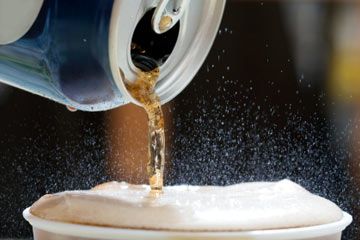
Despite legal challenges from the beverage industry, it seems that soda taxes are here to stay, for now anyway.On July 18, 2018, Pennsylvania's Supreme Court upheld Philadelphia's tax on soda, rejecting a challenge to the law. Eight other U.S. cities tax sugary sodas, as do a handful of other countries, including the U.K., South Africa and the Philippines. With obesity still at an epidemic level in the United States — nearly 40 percent of Americans were obese in 2016 — health advocates praise soda taxes like Philadelphia's as a way to prioritize health over profits.
But soda's not the only culprit to blame for weight epidemic in the U.S., though it's certainly getting a bulk of the blame, especially when it comes to drinks. What's not getting attention? Fruit juice, and many of our favorites have a lot of added sugar. Case in point: The average 7.5-ounce (221 milliliter) can of Coca-Cola has 25 grams of sugar — that's more than 6 teaspoons. An 8-ounce (236 milliliter) glass of orange juice has about 21 grams, or 5 teaspoons of sugar; apple juice has about 24 grams — that's 6 teaspoons of sugar. And 100 percent juice, no sugar added cranberry juice has 28 grams of natural sugar — almost 7 teaspoons — in part due to added grape juice, apple juice and pear juice. Meanwhile, the American Heart Association recommends women get no more than 25 grams of added sugar per day; men just 36 grams.
Advertisement
"I wouldn't say juice is just as bad as soda, but I tell my clients to stop drinking juice," Mascha Davis, a Registered Dietitian at Nomadista Nutrition in Los Angeles and a national spokesperson for the Academy of Nutrition and Dietetics, says. "It totally has a health halo, but it's an undeserved health halo. A lot of people drink juice because they think it's healthy."


